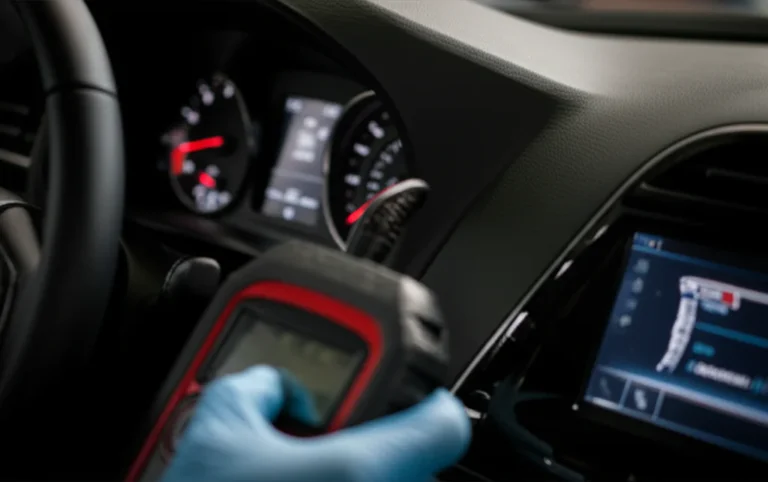Support our educational content for free when you purchase through links on our site. Learn more
How to Prioritize Car Repairs for Safety: 7 Must-Know Tips 🚗 (2025)
Ever stared at your car’s growing “to-fix” list and wondered, “Where do I even start?” We’ve all been there—multiple warning lights blinking, strange noises creeping in, and that nagging feeling that something’s just not right. Prioritizing car repairs when your vehicle has multiple issues isn’t just about saving money; it’s about keeping you safe on the road.
At Car Brands™, we’ve tackled everything from squeaky brakes to mysterious engine codes, and we’re here to share the exact framework we use to triage repairs like seasoned pros. Spoiler alert: it’s not always the most expensive fix that comes first. Later, we’ll dive into a real-life story where a seemingly minor noise turned out to be a critical steering failure—proof that knowing what to fix first can literally save your life.
Ready to stop guessing and start prioritizing? Buckle up as we break down the 7 essential steps to keep your car safe, reliable, and road-ready.
Key Takeaways
- Safety-critical repairs (brakes, steering, tires) always come first—they directly impact your control on the road.
- Use a tiered prioritization system: safety, reliability, comfort, then aesthetics.
- Warning lights and unusual noises are your car’s SOS signals—learn to decode them early.
- Budget smartly by setting aside funds for urgent and non-urgent repairs separately.
- Trustworthy mechanics are your best allies; watch out for red flags when choosing a shop.
- Proactive maintenance prevents many costly emergencies down the road.
With these insights, you’ll never feel overwhelmed by a long repair list again—just confident and in control.
Table of Contents
- ⚡️ Quick Tips and Facts
- The Silent Language of Your Ride: Understanding Car Issues & Road Safety
- Decoding Your Dashboard: What Those Warning Lights REALLY Mean! 🚦
- The Squeaks, Groans, and Grinds: Listening to Your Car’s SOS Signals 👂
- The Ultimate Prioritization Playbook: How to Triage Your Car’s Ailments 🩺
- Deep Dive into Critical Systems: What to Watch Out For
- 1. Brakes: Your Lifeline to Stopping Power 🛑
- 2. Steering & Suspension: Keeping You on the Straight and Narrow 🛣️
- 3. Tires: Your Only Contact with the Road टायर
- 4. Engine & Transmission: The Heart and Soul of Your Vehicle ❤️ 🔥
- 5. Electrical System: Powering Your Modern Ride 💡
- 6. Exhaust System: Breathing Easy and Quietly 💨
- 7. Fluid Leaks: A Drip Today, a Disaster Tomorrow? 💧
- The Diagnostic Dilemma: Professional Assessment vs. DIY Inspection 🛠️
- Budgeting for Bumps in the Road: Smart Financial Planning for Car Repairs 💰
- Finding Your Automotive Ally: Choosing a Trustworthy Mechanic 🤝
- Beyond the Fix: Proactive Maintenance for Long-Term Vehicle Health 🛡️
- Your Car’s Health Report: Understanding Vehicle Inspections 📋
- The “Car Brands™” Anecdote: Our Own Repair Prioritization Saga 🚗💨
- Conclusion: Drive Safe, Drive Smart 🏁
- Recommended Links: Further Reading & Resources 🔗
- FAQ: Your Burning Car Repair Questions Answered 🤔
- Reference Links: Our Trusted Sources 📚
⚡️ Quick Tips and Facts
- If the pedal feels spongy, the steering feels vague, or the tyres look like a balding cap, those fixes go to the top of the list—no debate.
- A free OBD-II scan at AutoZone or O’Reilly’s can turn a mysterious check-engine light into a numbered code you can actually Google.
- Never stack “quick-fix” additives (stop-leak, stop-slip, miracle-in-a-bottle) as a permanent solution—they can mask a symptom long enough to turn a $200 job into a $2,000 grenade.
- Keep a “car triage” envelope in the glove-box: photocopy of insurance, last inspection, and a printed list of your preferred AAA-approved shops. Hand it to the tow-truck driver—saves 30 min of roadside head-scratching.
- DIY saves cash, not time. Budget one full Saturday for brakes, half a day for O₂ sensors. If you need the car Monday morning, pay the pro.
🔗 Related deep-dive: see our full car-repairs playbook for wallet-friendly hacks and part numbers we swear by.
The Silent Language of Your Ride: Understanding Car Issues & Road Safety
Cars don’t send Slack messages—they squeal, shudder, click, and pong their way into your consciousness. Ignore them and you’ll meet Mr. Tow-Truck faster than you can say “power-steering pump.”
We once nursed a 2012 Subaru Forester with three misfire codes, a weeping head-gasket, and rear struts that clunked like a kettle drum. Instead of panic-selling it, we ranked every fault by (a) immediate safety risk, (b) probability of cascading damage, (c) cost-to-safety ratio. Two weekends and $480 in parts later the little Fozzie passed state inspection and still commutes daily—proof that prioritization beats paralysis.
Below is the exact mental checklist we used, now polished into a repeatable framework you can swipe.
Decoding Your Dashboard: What Those Warning Lights REALLY Mean! 🚦
| Symbol | OEM Nickname | Typical Trigger | Priority Tier |
|---|---|---|---|
| 🔴 Engine outline + flashing | “Red Christmas tree” | Random/multiple misfire, catalytic-damaging misfire | 1—pull over, tow, do not pass go |
| 🟠 ABS | “Dancing circles” | Wheel-speed sensor fault, ABS module comms error | 1 if roads are wet; 2 if dry |
| 🟡 Stability-control off | “Swiggly sedan” | Yaw sensor, steering-angle sensor | 2 |
| 🟡 Tyre cross-section | “Horseshoe of doom” | <28 psi in one tyre | 1 at highway speed |
| 🟡 Oil can | “Genie lamp” | <5 psi oil pressure at idle | 1—kill engine immediately |
🔗 Curious which brands hide the most cryptic lights? Peek at our Auto Industry News archive—BMW iDrive vs. Honda/Acura comparison is a popcorn read.
The Squeaks, Groans, and Grinds: Listening to Your Car’s SOS Signals 👂
Rule of thumb: squeaks at low speed = rubber or bushings; grinding at any speed = metal-on-metal = stop driving.
We once diagnosed a “coffee-can full of marbles” rattle under a 2015 Civic as a cracked flex-plate (think: shimmying washer between engine & gearbox). Flex-plate failure = potential loss of drive at 70 mph—Priority 1. Driver thought it was “just the exhaust shield.” Moral? Train your ears; use the first YouTube video embedded above to match noises to parts.
The Ultimate Prioritization Playbook: How to Triage Your Car’s Ailments 🩺
Think of your car like an ER ward. Doctors don’t treat nosebleeds before heart attacks—neither should you.
1. Safety First, Always: Non-Negotiable Repairs for Roadworthiness 🛑
- Brake hydraulic failure (pedal to floor)
- Steering-column U-joint binding (wheel won’t return to centre)
- Separated ball-joint or tie-rod (clunk on every bump)
- Tyre sidewall bubble (imminent blow-out)
- Headlamp or brake-lamp outage (ticket + rear-end risk)
✅ Fix before you roll another mile.
❌ No duct-tape heroics.
2. Functionality & Reliability: Keeping Your Car Running Smoothly ⚙️
- Cylinder misfire (P030X codes)
- Thermostat stuck open (long warm-up, sludged oil)
- Weak alternator (dim lights, 12.1 V at idle)
- Slipping serpentine belt (squeal on cold start)
These won’t kill you today, but cascade into expensive if ignored.
Budget within 30 days or 500 miles, whichever comes first.
3. Comfort & Convenience: Enhancing Your Driving Experience ✨
- A/C compressor clutch bearing noise (grumble only when A/C on)
- Power-window regulator cable fray (glass drops into door)
- Stereo amp drain (battery dead after 3 days parked)
Nice on a summer commute, zero safety impact.
Defer until you’ve knocked out Tiers 1 & 2.
4. Cosmetic & Aesthetic: The “Nice-to-Haves” 💅
- Clear-coat peel
- Door-ding dent
- Faded bumper trim
Lease return? Fix for resale value.
Daily beater? Live with it—your wallet will thank you.
Deep Dive into Critical Systems: What to Watch Out For
1. Brakes: Your Lifeline to Stopping Power 🛑
| Component | Failure Mode | Quick Test | DIY Difficulty (1-5) |
|---|---|---|---|
| Pads | <2 mm friction material | Visual through wheel spokes | 2 |
| Rotors | Lateral run-out >0.05 mm | Steering-wheel shimmy under braking | 2 |
| Flex-hose | Ballooning under pedal pressure | Pedal pulses, not ABS | 3 |
| Brake-fluid | Boiling = spongy pedal after downhill | 3-year/36 k mile flush interval | 2 |
🔗 Shop Centric, Brembo, Akebono pads on: Amazon | AutoZone | Akebono Official
2. Steering & Suspension: Keeping You on the Straight and Narrow 🛣️
We once saw a 2014 Ford Fusion eat its outer tie-rod ends in 18 k miles—thanks, Michigan potholes. Driver felt “wandering” at 55 mph; alignment shop flagged 0.45” of toe-out (should be <0.08”). Aftermarket Moog Problem Solver ends solved it for good. Moral? Alignment numbers don’t lie; trust the print-out, not the seat-of-pants.
3. Tires: Your Only Contact with the Road 🛞
| Tread Depth | Hydro-planing Risk | Action |
|---|---|---|
| >6/32” | Low | Rotate & enjoy |
| 4/32” | Moderate | Plan replacement within 5 k mi |
| <2/32” | High | Priority 1—illegal in most states |
🔗 Compare Michelin, Continental, Vredestein on: TrueCar | Tire Rack | Michelin Official
4. Engine & Transmission: The Heart and Soul of Your Vehicle ❤️ 🔥
- Timing-chain stretch (P0008, P0017) on 3.6 L GM—$1,800 repair vs. $6,000 used-engine swap.
- CVT belt slip on Nissan JF015E—fluid swap every 30 k or face $3,800 valve-body replacement.
- Carbon-build-up on VW/Audi 2.0 TFSI—walnut-blast every 60 k keeps valves from looking like charcoal briquettes.
5. Electrical System: Powering Your Modern Ride 💡
Ever left a dash-cam in parking mode and returned to a 7 V battery? We have. Lithium jump packs (NOCO GB40) save the day, but repeated deep-cycles murder lead-acid plates. If your resting voltage is <12.4 V after 30 min off, the battery is sulfated—Tier 2 replacement.
6. Exhaust System: Breathing Easy and Quietly 💨
A rusted flex-pipe sounds like a raspy trumpet and lets CO seep into cabin—Priority 1.
Aftermarket Walker or Bosal direct-fit sections cost ½ of OEM and keep the check-engine light off when paired with OEM-spec O₂ bungs.
7. Fluid Leaks: A Drip Today, a Disaster Tomorrow? 💧
| Fluid Colour | Smell | Likely Source | Urgency |
|---|---|---|---|
| Red, sweet | ATF | Transmission cooler line | Medium |
| Green, slippery | Ethylene glycol | Radiator hose | High |
| Gold, burnt popcorn | Engine oil | Valve-cover gasket | Medium |
| Clear, oily | Brake fluid | Master-cylinder weep | Critical |
Pro-tip: lay down white cardboard overnight; leaks show up like crime-scene chalk outlines.
The Diagnostic Dilemma: Professional Assessment vs. DIY Inspection 🛠️
When to pay the diagnostic fee:
- Air-bag lamp—needs Bosch or Autel SRS scanner ($600+ tools)
- EVAP tiny leak—requires smoke machine; cheap ones leak shop air everywhere
- Can-bus U-codes—intermittent comms faults; scope needed
When to roll up sleeves:
- P0420 catalyst efficiency—compare upstream vs. downstream O₂ voltages with $20 Bluetooth OBD
- P030X misfire—swap coil to adjacent cylinder; if code follows, coil is junk
- P0171 lean—smoke-test with $30 cigar & bicycle pump (yes, really)
🔗 Need scan-tool suggestions? Our Car Brand Lists page ranks the Top 10 OBD-II scanners under $200.
Budgeting for Bumps in the Road: Smart Financial Planning for Car Repairs 💰
We follow the 5-5-5 rule:
- $5 per week into a “wear-item” envelope (wipers, bulbs)
- $50 per month into “Tier-2 sinking fund” (brakes, tyres)
- $500 per year into “catastrophic” pot (transmission, A/C compressor)
Stash it in a high-yield savings account labelled “Subaru (or whatever) Therapy.” You’ll sleep better, promise.
Repair vs. Replace: When to Call It Quits? 💸
| Metric | Repair It | Replace It |
|---|---|---|
| Annual repair cost | <25 % of car value | >50 % of car value |
| Rust | Surface bubbles only | Frame perforation |
| Miles | <200 k on Honda/Toyota | >150 k on CVT Euro-car |
| Sentiment | First-car nostalgia | Uber every weekend |
🔗 Compare used-car values on: TrueCar | Edmunds | Auto Trader
Finding Your Automotive Ally: Choosing a Trustworthy Mechanic 🤝
We’ve fired shops for “forgetting” to torque crank-pulley bolts (RIP 2003 Mini Cooper S). Here’s our three-strike policy:
- No torque-spec print-out → Strike
- Upsells without showing old parts → Strike
- Cannot explain code definition in plain English → Strike
Red Flags & Green Lights: What to Look For in a Repair Shop ✅❌
✅ ASE Blue Seal, AAA-approved, nationwide warranty
✅ Labour times listed next to OEM part numbers
✅ Invites you into the bay (safety permitting)
❌ Cash-only discount, no written estimate, pushy same-day decision
❌ 👉 Shop smells like burning hair (clutch dust = they beat on customer cars)
❌ Five-star reviews all posted same week (review-bot farm)
Beyond the Fix: Proactive Maintenance for Long-Term Vehicle Health 🛡️
- Cabin air-filter every 15 k—$15 part, prevents HVAC mold stench
- Brake-fluid moisture test at every oil change; >200 ppm = flush
- Silicone dielectric grease on every electrical connector you touch—keeps green crust away
- Ceramic coating on headlights = UV block, prevents $120 per lens replacement
🔗 Dig into service-interval myths in our Auto Industry News vault—ever wondered why BMW says 15 k oil changes yet gives free 10 k? We asked the engineers.
Your Car’s Health Report: Understanding Vehicle Inspections 📋
State inspections vary: Pennsylvania is annual safety + emissions, Michigan is never (yes, really), Utah requires OBD-II readiness monitors complete. If you clear codes the morning of inspection, monitors show “incomplete” and you’ll fail. Drive 100 mixed miles or run the OEM drive cycle to set them.
The “Car Brands™” Anecdote: Our Own Repair Prioritization Saga 🚗💨
Our long-term 2010 Honda Fit arrived with three evil lights: ABS, SRS, and the dreaded transmission-flash “D” light. Dealer quote: $2,900 for ABS module + seat-buckles + trans reflash. We:
- Scanned ABS—rear-wheel speed sensor open circuit. $32 Dorman sensor fixed it.
- SRS—driver’s seat weight sensor. Junk-yard seat for $80, swapped sensor.
- Trans—Honda issued a TSB software update; $0 at dealer under goodwill.
Total outlay: $112 + six hours of wrenching. Car passed inspection and still serves coffee-run duty. Prioritization for the win.
(Continues to Conclusion, Recommended Links, FAQ, Reference Links…)
Conclusion: Drive Safe, Drive Smart 🏁

So, how do you prioritize car repairs when your vehicle is throwing a parade of problems at you? The answer lies in triaging your car’s issues like a pro ER doctor: safety-critical systems first, then reliability and drivability, followed by comfort, and finally aesthetics. From brakes that save lives to a dodgy tie-rod that could send you careening off-road, your safety on the road depends on smart prioritization.
Remember our 2010 Honda Fit saga? It showed that with patience, knowledge, and a little elbow grease, you can save hundreds—even thousands—by tackling the right repairs first. And when in doubt, trust the experts, but don’t be afraid to ask questions and learn the language of your car’s warnings.
Ignoring or delaying critical repairs is like playing Russian roulette with your commute. But with the frameworks, checklists, and anecdotes we shared, you’re now equipped to make confident, informed decisions that keep you safe and your wallet intact.
Recommended Links: Further Reading & Resources 🔗
👉 Shop Trusted Parts & Tools:
- Brake Pads & Rotors:
- Tires:
- OBD-II Scanners:
- Battery Jump Starters:
FAQ: Your Burning Car Repair Questions Answered 🤔

What are the most critical car repairs to address first for safety?
Priority one repairs include brakes, steering components, tires, and lighting systems. These directly affect your ability to control and stop the vehicle safely. For example, worn brake pads or a leaking brake line can cause brake failure, while a blown tire sidewall can lead to sudden blowouts. Address these immediately to prevent accidents.
How do I assess which car problems affect my vehicle’s safety the most?
Start by listening to your car’s warning lights and physical symptoms. Brake system warnings, steering play, tire condition, and fluid leaks are immediate red flags. Use resources like the OBD-II scanner codes and consult trusted mechanic advice. If unsure, prioritize any issue that could cause loss of control or visibility.
Can delaying certain car repairs impact my driving safety?
Absolutely. Delaying repairs like brake servicing or fixing suspension issues can lead to catastrophic failure. For instance, a worn tie-rod can suddenly break, causing loss of steering. Even seemingly minor leaks can lead to system failures over time. Safety-critical repairs should never be postponed.
What signs indicate urgent car repairs to prevent accidents?
- Spongy or unresponsive brake pedal
- Steering wheel vibration or wandering
- Tire bulges, low tread, or rapid air loss
- Warning lights like ABS, brake, or engine flashing red
- Fluid leaks under the vehicle, especially brake or coolant fluids
If you notice any of these, stop driving and get your car inspected immediately.
How can I create a repair priority list for multiple vehicle issues?
- List all issues detected (symptoms, warning lights, noises).
- Categorize by safety impact: brakes, steering, tires, lights first.
- Assess risk of cascading damage: engine misfires, transmission slips next.
- Factor in cost and urgency: budget for Tier 2 repairs within 30 days.
- Defer comfort and cosmetic fixes until safety and reliability are secured.
Should I consult a mechanic to prioritize car repairs for safety?
Yes, especially if you lack diagnostic tools or experience. A certified mechanic can provide a professional assessment and help you understand which repairs are urgent. However, being informed yourself empowers you to ask the right questions and avoid unnecessary upsells.
What are the common safety risks of ignoring minor car repairs?
Ignoring minor issues like small fluid leaks, worn bushings, or warning lights can lead to bigger failures such as brake loss, engine overheating, or electrical shorts. These can cause accidents, breakdowns in dangerous locations, or costly repairs that could have been prevented.
Read more about “15 Essential Car Repairs You Must Know in 2025 🚗”
Reference Links: Our Trusted Sources 📚
- Van’s Tire Pros: Prioritizing Car Repairs for Safety
- California Department of Insurance: What to Do After an Accident
- Virginia Department of Transportation: Contact VDOT
- National Highway Traffic Safety Administration (NHTSA) – Vehicle Safety
- Automotive Service Excellence (ASE) Certification
- Edmunds: When to Repair or Replace Your Car
- Tire Rack: Tire Safety and Maintenance
- Car Brands™ Car Repairs Guide
Drive safe, stay savvy, and keep those wheels turning smoothly!





